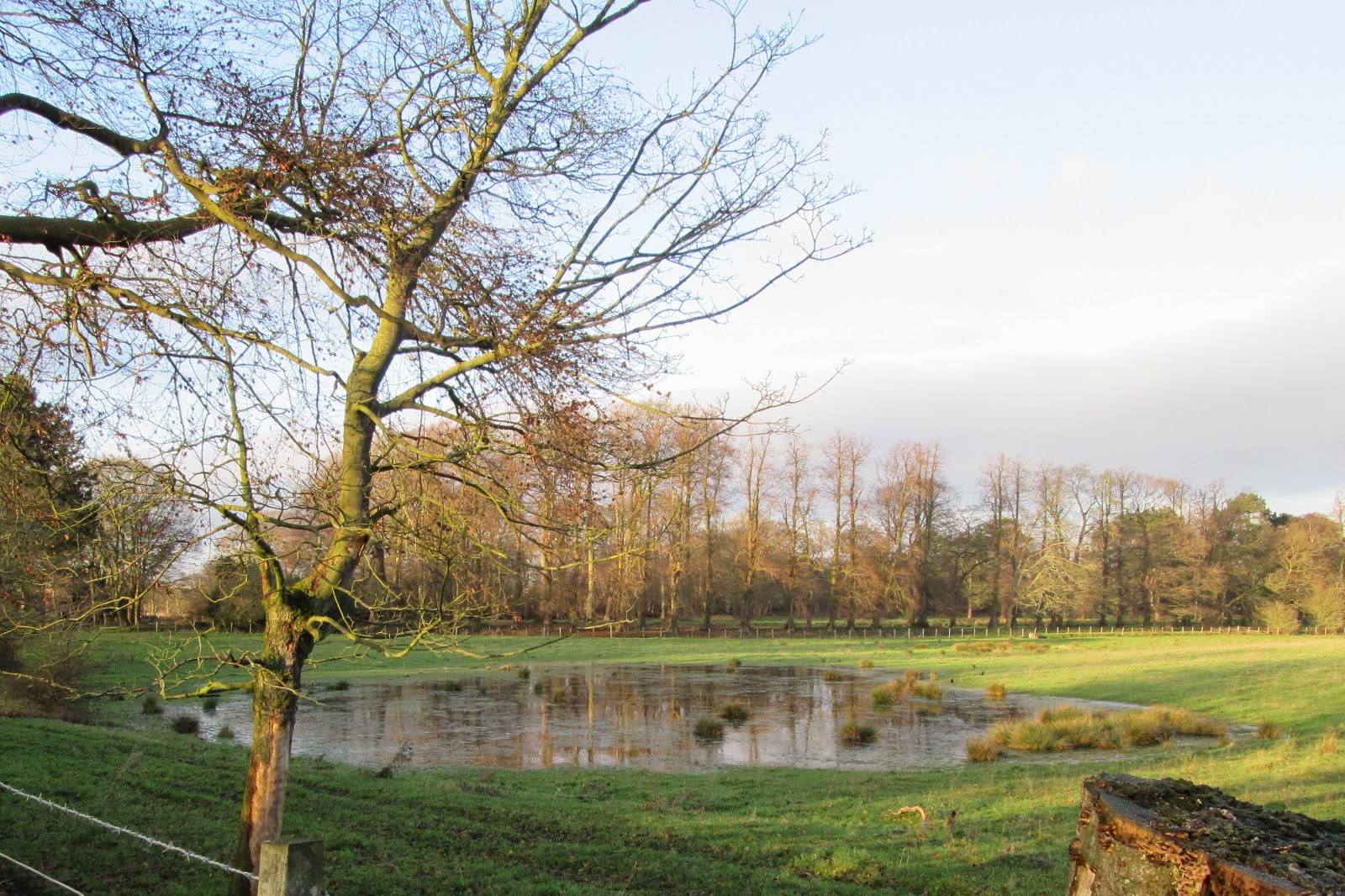 |
| The Fintry Hills |
 |
| Carron Valley Reservoir |
 |
| Bridge at Carron Valley (upstream of Denny) |
 |
| Walkway along the Banks of the Carron |
 |
| Kelpies from River Carron Walkway |
 |
| Kelpies Sculpture |
The first evidence of wildlife I encountered was a mixed group of ducks and gulls enjoying the nutrient rich waters downstream of the outfall from Dalderse Sewage Treatment Works (don't knock it until you've tried it..........only joking.......don't try it). Further up the river there was a family of Swans (adults and two cygnets) relaxing on the muddy bank:
 |
| Swan Family on bank of River Carron |
 |
| Row of Beech Trees |
 |
| Meadow behind Beech Trees |
These deer seemed to be surprisingly tolerant of people walking back and forward along the walkway. They would occasionally lift their heads, their ears would twitch and then they would go back to grazing. Any of the Roe Deer I have encountered in the past would bolt for the cover of a woodland as soon as the saw you, they certainly would not linger in the open for too long.
As I walked further along the path I came across a pond in an adjacent field and I was hopeful that this may contain some interesting wildlife:
 |
| Pond in Field |
 |
| Doocot in Woods |
Shortly after this point I turned round and headed back towards Grangemouth as I did not think I would find much in the way of wildlife along the short stretch of walkway to Carronshore.
As I approached the outfall from the sewage works I noticed that not only was there still a collection of ducks and gulls, there was also a Heron on the bank beside the outfall:
I'm not sure what the Heron was hoping to catch but I presume it was some small fish which had been attracted to the nutrients from the outfall. I grew up in the Carronshore area and never thought that fish could ever exist in such a polluted river (as it was then); however a huge reduction in amount of heavy industry in the area coupled with major improvements in discharges has I'm sure led to life returning to the lower reaches of the River Carron.
Just downstream of the outfall, where the surplus water from the Forth & Clyde Canal discharges in to the river, I noticed that a group of male Teal where swimming about in a circular motion:
After circling around a bit they started to attack each other, with a bit of 'parallel swimming' thrown in as well. I wondered if this was some sort of breeding display such as male red deer do..............a sort of 'Teal Rut'..........if it was there were no females about to impress.
Normally on the banks of a tidal river (at low tide) you would expect to see some waders but all I saw was one Redshank under the M9 flyover which flew away before I could photograph it. This may have something to do with the very deep and very soft mud that makes up the banks of the River Carron.........as anybody brought up in this area knows, this mud is perilous. To illustrate this I took a photograph of this perfectly serviceable, modern bicycle which has been tossed into the mud only a few feet from the bank side...........and nobody has made any attempt to retrieve it!!!...........as far as we can tell!!
 |
| Anybody want a bike? |
Unfortunately you could not hear him singing above the noise of the traffic on the M9 motorway.
Then there was the less colourful, but just as beautiful female Yellowhammer:
What a fantastic hour or so I had on this short walk...... and I cannot believe how accommodating the wildlife around this area was...........they just stood there and let me film them.............I definitely must return sometime.
Take Care,
TeddyEdward